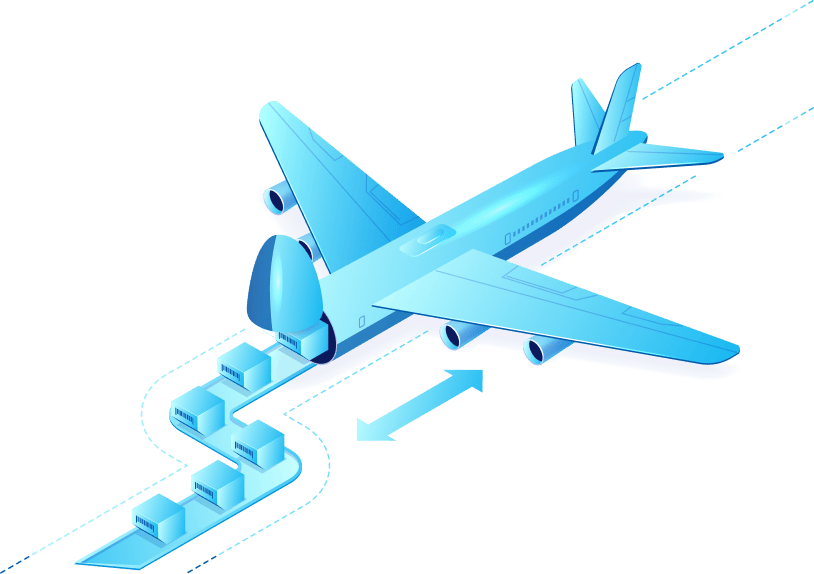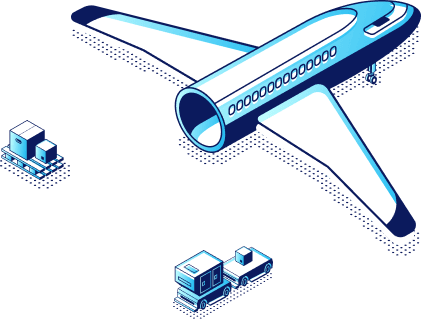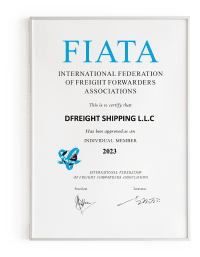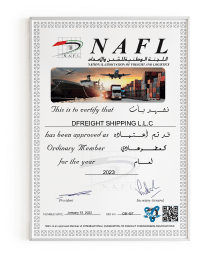Air Freight to Argentina
Air Freight to Argentina
Fast, Reliable, and Efficient Air Freight to/from Argentina
DFreight Air Freight Service is your top choice for swift and dependable air cargo shipping to/from Argentina. For a variety of commodities, including perishable goods, healthcare supplies, electronics, machinery, or anything that demands fast delivery from Argentina to the UAE and vice versa, we’ve got you covered. With years of expertise, comprehensive solutions, a commitment to on-time delivery, cutting-edge technology, top-notch security, competitive pricing, and a global reach, we’re here to make your airfreight experience seamless and worry-free. Trust DFreight for excellence in air shipping and submit your inquiry right away to receive the best competitive prices for your air cargo to/from Argentina.

Argentina Exports and
Imports
The top exports of Argentina are Corn, Soybean Meal, Soybean Oil, Delivery Trucks, and Wheat, exporting mostly to Brazil, China, United States, India, and Chile.
The top imports of Argentina are Motor vehicles; parts and accessories, Refined Petroleum, Petroleum Gas, Soybeans, and Vaccines, blood, antisera, toxins and cultures, importing mostly from China, Brazil, United States, Germany, and Paraguay.
Market Update
According to OEC, in 2021, Argentina was the number 26 economy in the world in terms of GDP, the number 48 in total exports, the number 51 in total imports, the number 64 economy in terms of GDP per capita and the number 60 most complex economy according to the Economic Complexity Index.
Argentina exported US$773.54 Million during 2021 to the United Arab Emirates and imported US$337.56 Million during 2021 from the UAE, according to the Trading Economics database.
The freight market between Argentina and the United Arab Emirates will likely grow considerably in 2023. Brokers expect an increase in freight moving between the two countries due to increased trade investment, particularly with Argentina set to expand its trade agreements. Additionally, introducing more efficient cargo and transportation methods is expected to spur growth in the market. The favorable trade environment between the two countries will help to drive economic development and facilitate international trade. This, combined with other efforts, will contribute to the continued growth of the Argentina-UAE freight market in the years ahead.
Banned Products
Due to Argentina’s import policies, the country has a list of banned products that are not allowed to be imported. These include video game consoles and cartridges, industrial acids and alkalis, firearms, unregistered drugs, and asbestos–containing products. Additionally, products with a variation in quality, such as medication or food, cannot be imported into Argentina. Some items may also require preapproval from the local authorities in order to be imported.


Documents & Customs Clearance
One thing to take into account when exporting cargo internationally is customs clearance. You must be aware of the customs clearance regulations of the destination countries when shipping cargo from Argentina.
The following documentation must be given to local customs for international shipments by the supplier, consignee, or intermediary:
– A commercial invoice
– A packing list
– A bill of lading
– A certificate of origin
Shipping Different Commodities from/to Argentina
Shipping Tires Worldwide: Everything You Need to Know
6 Tips for Shipping Pharmaceuticals in UAE
An Ultimate Guide to Shipping Prefabricated Buildings
Major Air Cargo Port
-
Italy
Germany
United Kingdom
Netherlands
France
Turkey
Spain
Denmark
Switzerland
Czech Republic
Hungary
Poland
Romania
Greece
Portugal
Slovakia
Sweden
Ireland
-
China
India
Taiwan
Hong Kong
Japan
Singapore
South Korea
Malaysia
Qatar
Indonesia
Saudi Arabia
Thailand
Bangladesh
Lebanon
Kuwait
-
Uganda
Congo
Egypt
Rwanda
Kenya
South Africa
Morocco
Algeria
-
-
-


We consolidate cargo from Germany, Belgium, France, Luxembourg, and nearby cities to Amsterdam, then ship it directly to Dubai.
Certificates & Memberships




- Stress-Free Documentation We simplify the paperwork process, making it easy for you to focus on what matters most – your shipment.
- Clear Cost Breakdown Our pricing is straightforward, with a detailed breakdown so you can see exactly where your money goes.
- Dedicated Support We’re just a click away. Your dedicated support team is there to address any questions or concerns promptly.
- Live Shipment Tracking Easily follow your ocean and air freight shipments 24/7 with real-time tracking. No more unexpected delays.
Ship Your Cargo with Ease
Get Started Today!
Why Choose Consolidated Air Freight?
Guaranteed Space
Secure your cargo space without worries.
Reliable Scheduling
Count on our reliable predictive schedules
Nationwide Collections
We pick up your cargo throughout Benelux and Germany
Regional Trucking
Benefit from local trucking within Europe and GCC
Competitive Pricing
Enjoy market-competitive air freight rates
Fast Delivery
Rapid and secure shipping for time-sensitive items
Regional Trucking
Benefit from local trucking within Europe and GCC
Competitive Pricing
Enjoy market-competitive air freight rates
Fast Delivery
Rapid and secure shipping for time-sensitive items
Guaranteed Space
Secure your cargo space without worries.
Reliable Scheduling
Count on our reliable predictive schedules
Nationwide Collections
We pick up your cargo throughout Benelux and Germany
Any Questions?
Reach out to us, and our experts will work with you to discover the tailored solution you need.





 Germany
Germany Netherlands
Netherlands Luxemburg
Luxemburg Belgium
Belgium





